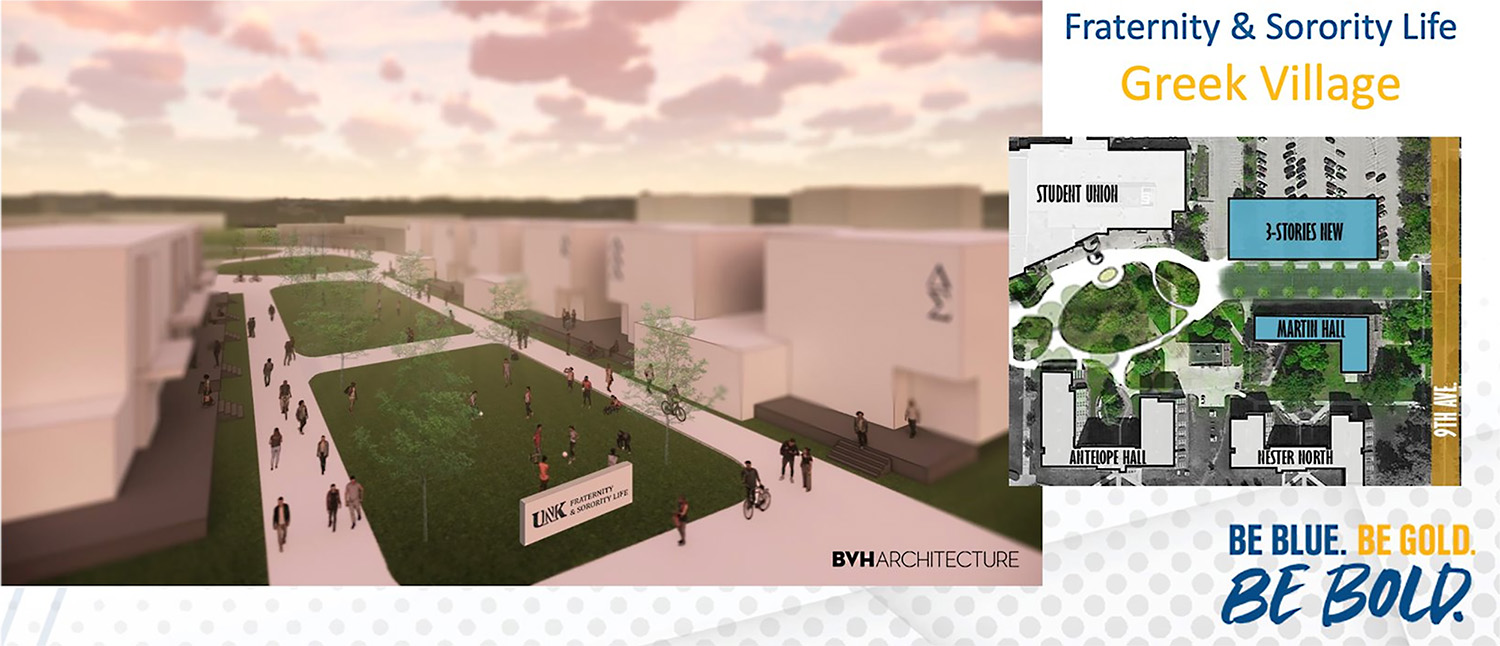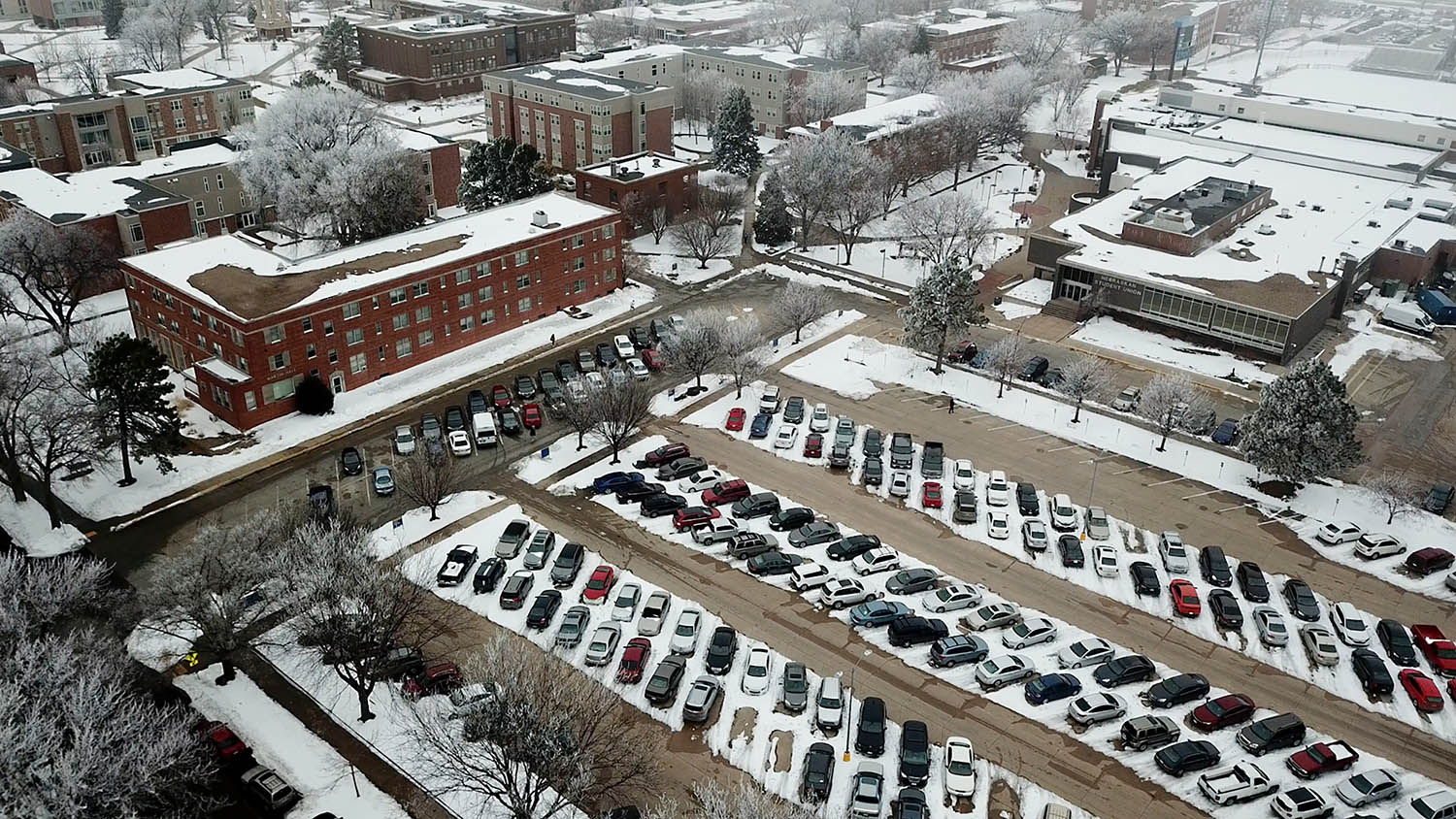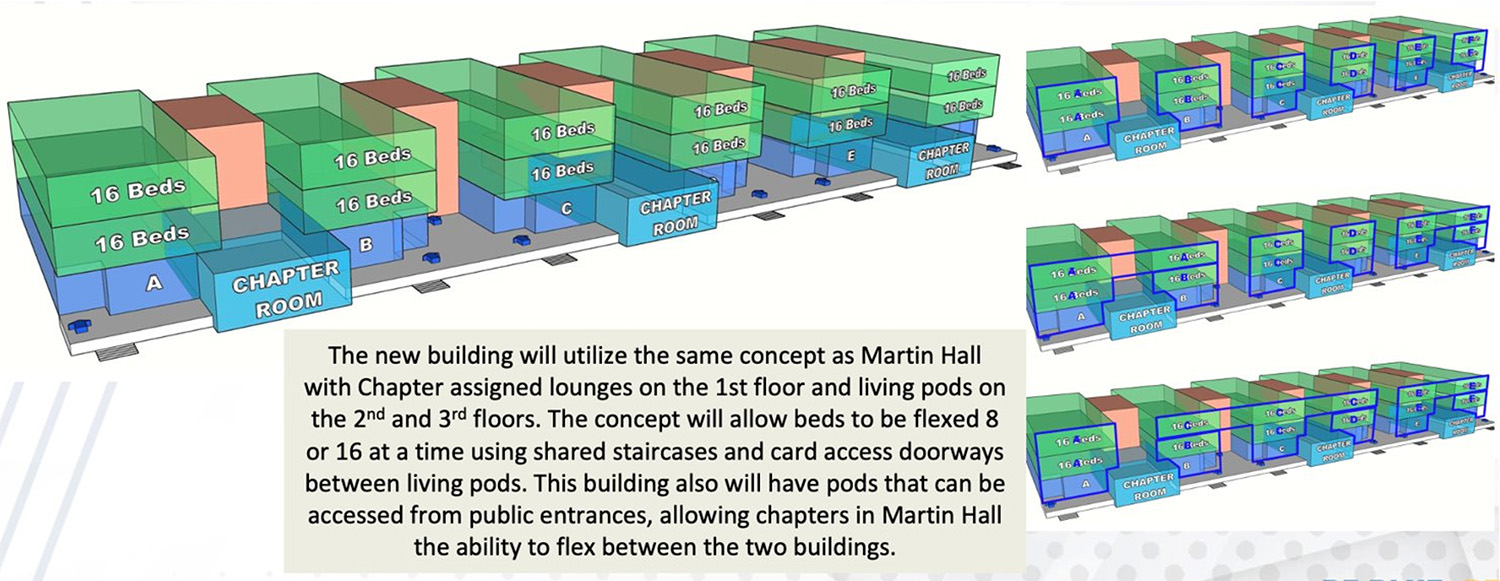
KEARNEY – The University of Nebraska at Kearney is requesting approval of a project that would replace and relocate the on-campus housing for fraternity and sorority members.
The plan, which will be considered at the Feb. 12 Board of Regents meeting, provides long-term stability for Fraternity and Sorority Life (FSL) while creating another affordable and attractive housing option that meets the demands of today’s students.

“UNK has a reputation for quality, student-centered experiences, and our FSL community is one of the best examples of this dynamic educational environment,” said Kelsey Hassenstab, assistant director of Fraternity and Sorority Life. “Our 700-plus members are involved across campus and the Kearney community, and they excel academically while holding many of the top student leadership positions at UNK.”
To support these students and strengthen the FSL living-learning communities, UNK is proposing a $26.65 million project that replaces the current fraternity and sorority housing – University Residence North (URN) and University Residence South (URS) – through a combination of new construction and a rebuild of Martin Hall.
A three-story, 39,000-square-foot residence hall would be built on the south portion of Lot 3, east of the Nebraskan Student Union. This building would feature chapter lounges on the first floor, with eight- and 16-bed housing pods on the second and third floors. It’s designed for larger chapters with more members living on campus.
Martin Hall, a 39,700-square-foot residence hall last occupied in 2014, would feature a similar layout, with chapter lounges on the first floor and eight-bed pods on the second and third floors. It would also house shared chapter rooms in the basement, as well as a community “great room”/clubhouse space on the main floor that encourages interaction among the different organizations.
By renovating Martin Hall, UNK is able to utilize an existing resource and preserve some of the building’s historic elements while adding new amenities and upgrades.
The residence halls are designed to accommodate both large and small chapters. The project includes up to 245 beds – 165 in the new building and 80 in Martin Hall – providing enough living space and chapter room availability for all 12 UNK fraternities and sororities. Currently, only nine chapters have members living in URN or URS.
“This project will facilitate more community building among the FSL organizations by providing more opportunities for all the chapters to be involved,” Hassenstab said. “It’s more inclusive and progressive housing, which will allow us to grow closer as a community and work together to achieve our educational and community service goals.”

Location is another benefit of the proposed plan.
The FSL residence halls would face each other, with a green space in between serving as an extension of the student union plaza. This puts some of UNK’s most active students directly next to the Nebraskan Student Union, a hub of social activity on campus. It also gives them easy access to dining options inside the union.

“We’re going to be able to provide students with a better experience,” said George Holman, associate dean for Residence Life. “These facilities will meet their needs now and well into the future.”
That can’t be said about the current FSL housing.
URS and URN were constructed in 1991 and 1992 as a temporary and quick solution to issues within the FSL community, which was moved onto campus to offer a safe, education-centered environment for members. The wood-frame buildings had a life expectancy of 20 years.
Now 29 and 30 years old, the buildings have the highest annual maintenance and operating costs among UNK’s residence halls and continue to experience mechanical infrastructure issues. Renovation of the current buildings is not an option, with the cost to make repairs and improvements estimated at $37 million.
The $26.65 million replacement project would be funded with $10 million in facilities reserves and $16.65 million from an internal lending program. By eliminating Louie’s Diner, a food court in URS, the university expects to save $250,000 to $350,000 in yearly food services expenses. Additional savings would be realized by sharing residence hall staff with nearby campus housing.
If the plan is approved by the Board of Regents, construction could begin this summer with a projected completion date of late 2022 or early 2023. URS and URN would be razed after the transition.

